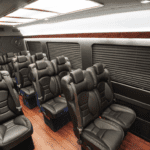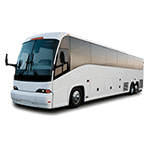
28 Jul WHY AIR TRAVEL IS TOUGHER THAN EVER
EXECUTIVE TRAVEL: GETTING WORSE AS TIME GOES BY?
If you’re a professional who travels for business on a regular basis, you probably know the particular ills of the airport. From getting bags checked to waiting in line at security to getting the middle seat between a screaming baby and someone who snores, you know how miserable a flight can be, especially when you have business matters on your mind and the distractions are making it impossible to work efficiently.
Business travelers have an especially potent cocktail of stresses when it comes to the airport because their livelihood depends on the close maintenance of their schedules. Never mind trying to work in the crowded, uncomfortable airport during delays, air travel itself has become downright miserable. Why is air travel tougher these days, and how can you abate the decline in airline experience? Keep reading.
THE SEATS ARE GETTING SMALLER
When was the last time you got on a plane and thought, “My, how roomy and comfortable this seat is.” Probably never. Maybe in the 90s. Or possibly the last time you flew first class. For many business travelers, first class simply isn’t an option unless they have a carte blanche from their company, so that means they see a lot of the standard sized airline seat.
And it’s miserable.
Airline seats have decreased in width by two inches since their all-time high of 18.5 inches in the 1990s. What’s more? The average airline passenger has increased in size by at least 20 pounds. In short, the seats are smaller while the passengers are, in general, bigger.
Rising fuel costs and other financial concerns have made it necessary for airlines to increase a number of passengers they transport by decreasing seat width to squeeze more seats onto the aircraft. The results are cramped space, less elbow room, and a generally uncomfortable flight.
The solution? We’re afraid there isn’t one, except to make yourself as comfortable as possible during your flights. Make certain you have noise-blocking headphones, earplugs or a sleeping mask to maximize the sleep you do manage to get. Keep all of your things stored in easy-to-access compartments in your carry-on.
MORE AIRLINES CHARGE FOR CHECKED BAGS
If you go on business trips that last a week or longer, you’re probably familiar with the checked-bag fee. The vast majority of airlines charge at least $25 for your first checked bag, with prices rising for each additional checked bag you bring. Only JetBlue and Southwest Airlines let you check a bag for free.
The easiest way to save money on the checked bag fee is to simply not check a bag. Find a solid carry-on, pack it with mix-and-match clothing items in neutrals and blacks, and save that extra $25. Not only will getting around the airport be easier with only a carry-on, you won’t have to stand in line at the bag check station ever again.
AIRLINES OFFER FEWER EXTRAS
In the olden days, you got an in-flight meal and snacks each time you flew. Nowadays, you’re lucky if you get a pack of peanuts, especially on short flights. Some airlines charge extra for any food you purchase on any flight. If you don’t want to pay extra for peanuts, be certain to bring your own snacks with you each time you fly. Bringing your own snacks will help you control your diet and eat healthy while you travel as well, which is a huge plus for many business travelers who see their diets suffer when they’re on the road.
Here’s the thing: executive travel is rarely fun. But it can be more enjoyable if you know how to accommodate the constant changes in the airline industry. From smaller seats to fewer snacks to extra fees, just be prepared and your next business trip won’t be a nightmare.
photo credit: ecstaticist via photopin cc







